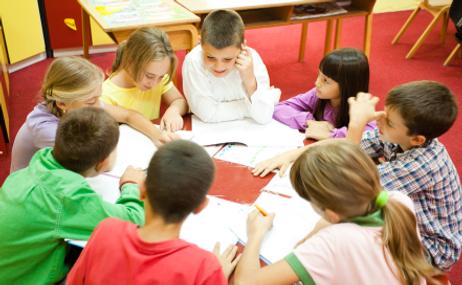Charter schools have become the modern rival of public schools, but does the reality of charter performance match the hype? According to Change.org, "Charter schools get overwhelmingly positive press and make a lot of claims about their success. But actually, numerous studies confirm that their achievement is indistinguishable from that of traditional public schools. Some are very successful, some are troubled and struggling, and the rest are somewhere in between just like traditional public schools."
In a closer examination, charter schools, as explained by US News and World Report, are publicly funded institutions that operate under their own standards of conduct and curriculum outside the realm of local public school districts. Although these institutions are funded by tax dollars, charter schools are ultimately given the freedom to establish their own methods of operation, similar to how many private schools are able to design their instructional and social practices. According to the National Education Association, although some state statutes, regulations and rules may still apply to charter schools, they are generally outside the bounds of traditional educational oversight by the state and instead are governed by a board of directors. The original impetus for the creation of charter schools was to increase competition for students, thus giving parents more choices in terms of where their children go to school. It was also theorized that increased competition between public and charter schools would lead to better educational programs for all students.

Yet, despite these freedoms, many experts argue that the charter schools are under-performing in comparison to public schools. On the other hand, supporters of charter programs argue that the data used to draw negative attention to charter school scores is misleading, biased, or falsely computed. With staunch supporters on both sides of the debate, charter schools and public schools are continually being thrown into the boxing ring.
Test Scores: Charter Schools vs. Public Schools
In evaluating some of the statistical studies that seek to compare the performance of charter and public schools, recent investigations conducted by the Center for Research on Education Outcomes (CREDO) at Stanford University reveal that students' test scores may prove that public schools are now outperforming charter schools. The Stanford analysts compared reading and math state-based standardized test scores between charter school and public school students in 15 states, as well as scores in the District of Columbia. Experts found that 37 percent of charter schools posted improvements in math scores; however, these improvement rates were significantly below the improvement rates of students in public school classrooms. Furthermore, 46 percent of charter schools experienced math improvements that were "statistically indistinguishable" from the average improvement rates shown by public school students.
Another study reported by the New York Daily News found that public schools and charter schools in New York City showed equally “dismal” performance on state assessments aligned to more rigorous standards. Just 25 percent of charter school students achieved proficiency in English, one percent less than public school students. In math, 35 percent of students at charter schools were proficient, as compared to 30 percent of public school students. These most recent scores represent a continuous five-year drop in math and English scores for all schools in New York City.
Yet, in Chicago, charter schools seem to be finding success where public schools are not. According to a story by the Chicago Tribune, charter school students are showing greater gains in both math and English than their public school counterparts. These gains show even greater significance for low-income and minority students. Over the last five years, charter school students in Chicago performed as well or better than public schools in terms of achievement in math and English.
Looking Between the Numbers
While recent reports seem to support the triumphs of public schools in some areas, a deeper assessment of various studies and statistics reveals that students who come from lower-income families or students who are English language learners have higher success and performance rates in charter schools than their public school counterparts. Adding to these positive findings, supporters of charter schools also tend to boast that their programs offer significantly more rigorous challenges and requirements than public schools.
In addition, math and reading scores alone may not be a sufficient analysis of the performance of charter schools, as some institutions cultivate students with a particular talent for arts, technology, or music. The innovation and curricular experimentation seen in charter schools benefits not just charter school students, but also public school students whose schools introduce new programs of their own in order to keep pace with those offered at charter schools.
Conversely, opponents of charter schools argue that although they have more latitude for developing curricula for high achieving students, charter schools lack extensive special needs programs. Therefore, many believe that charter schools discourage the enrollment of special needs students or that they simply pick and choose the brightest students without adjusting their programs for accommodating circumstances.
What Does the Future of Charter Schools Hold?
In their most ideal form, charter schools were originally meant to serve the poorest of low-income students. In reality, however, charter schools may accept small percentages of low-income kids, but they generally do not admit extremely high risk, high need, or challenging students.
In addition, charter school enrollments are propelled only by self-initiative. By law, a school leader cannot demand that a student attends a charter program; thus, only parents who are made aware of the benefits of various local charter programs are able to sign their child up for such opportunities. As a result, parents who are unable or unmotivated to take a driven interest in their child's education typically leave their children in traditional public schools. Sadly, it is this same pool of children who typically are the under-performing students.
As Change.org further asserts, educators who are working with unique family circumstances and challenges are forced to deal with "Parents who have been charged with drug possession, prostitution, and other crimes. These are the types of parents who aren't likely to be researching the best charter schools for their children and filling out all the forms."
While the debate between charter and public school programs continues to gain attention, President Obama has declared his strong support for charter school investments. In fact, President Obama allocated a large sum of stimulus moneytowards the enhancement of charter schools across the country.
Unfortunately, since charter schools have only been in existence in the United States since the 1990s, it may be too soon to tell whether or not these institutions are fairly, justly, and effectively providing students with more rigorous challenges and opportunities than their public school counterparts. Ultimately, the conflicting data from research demonstrates that wide variability is found in the quality of education and the performance of children at both charter and public schools. Thus, the debate about which school is better rages on.











